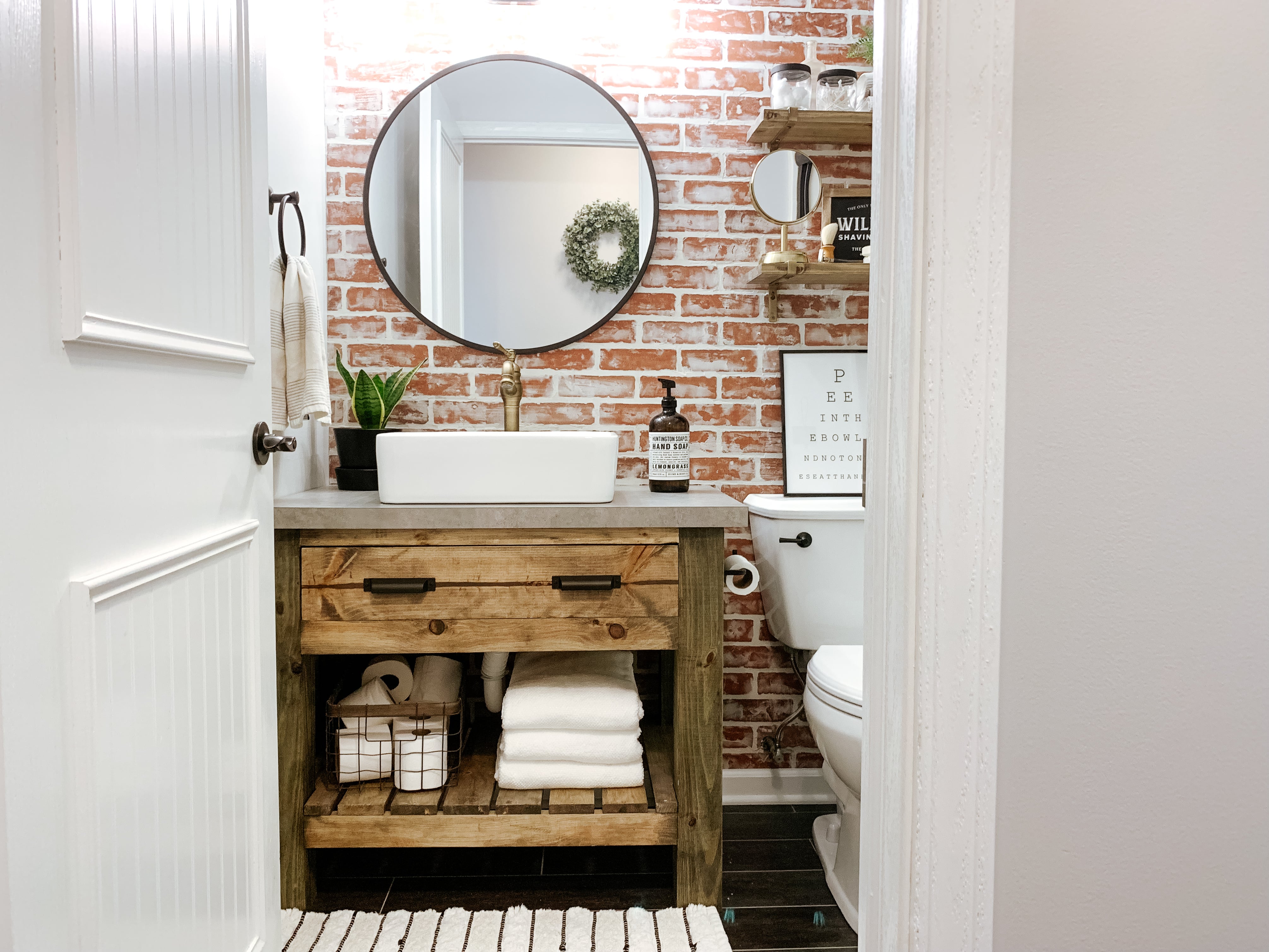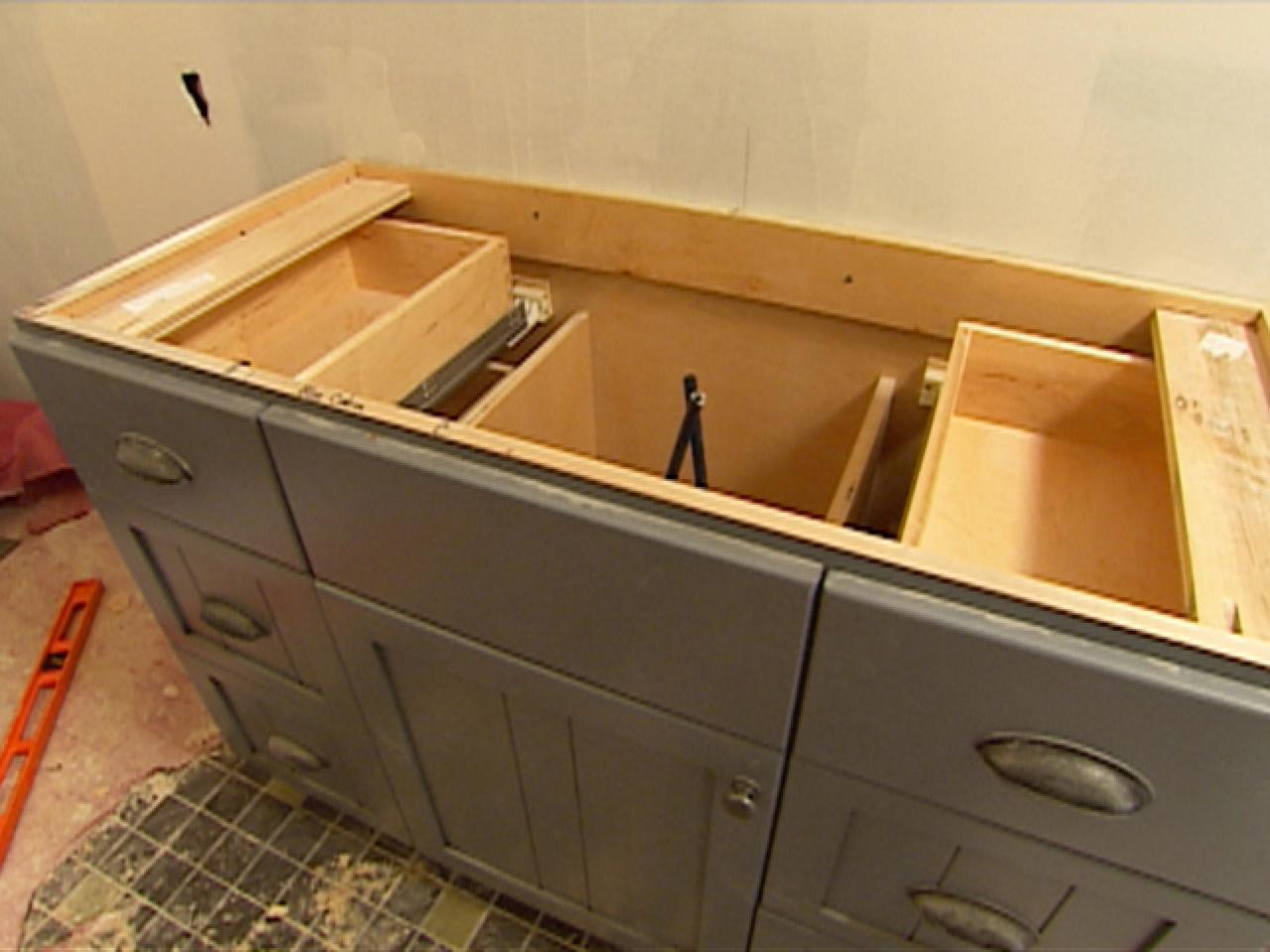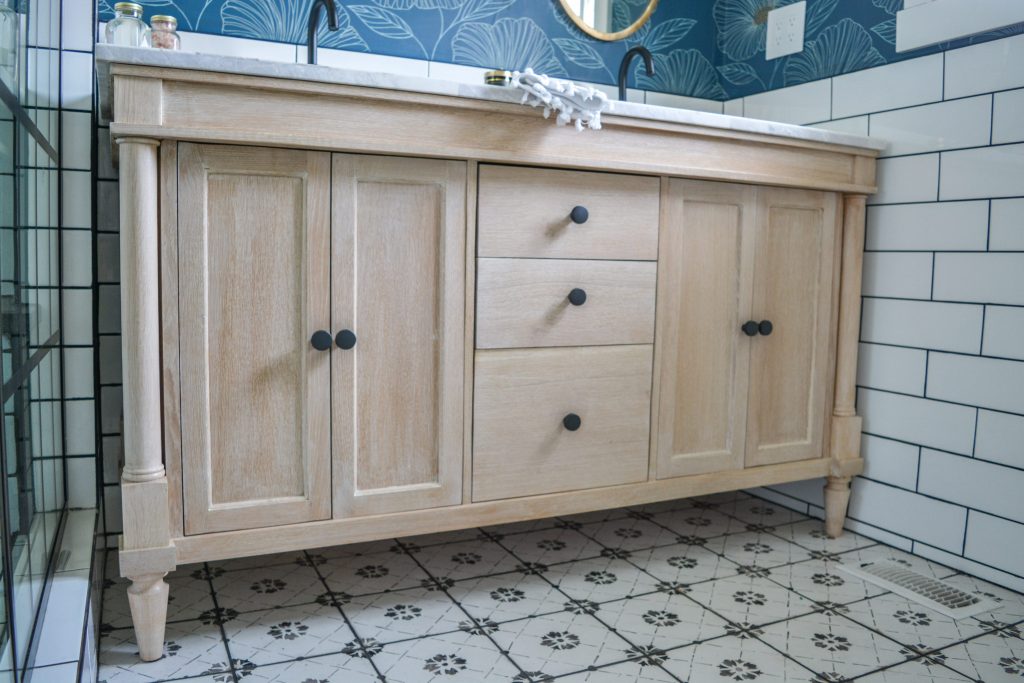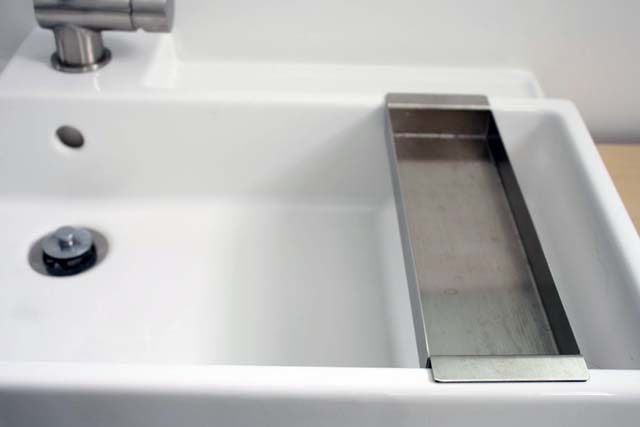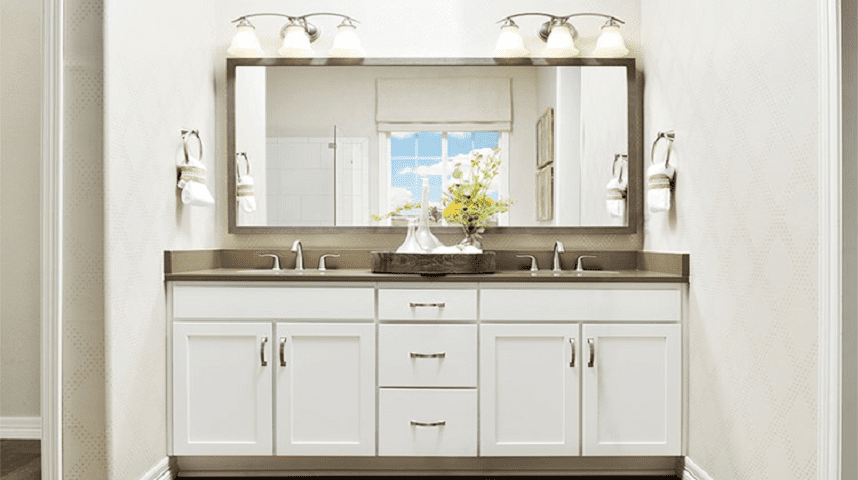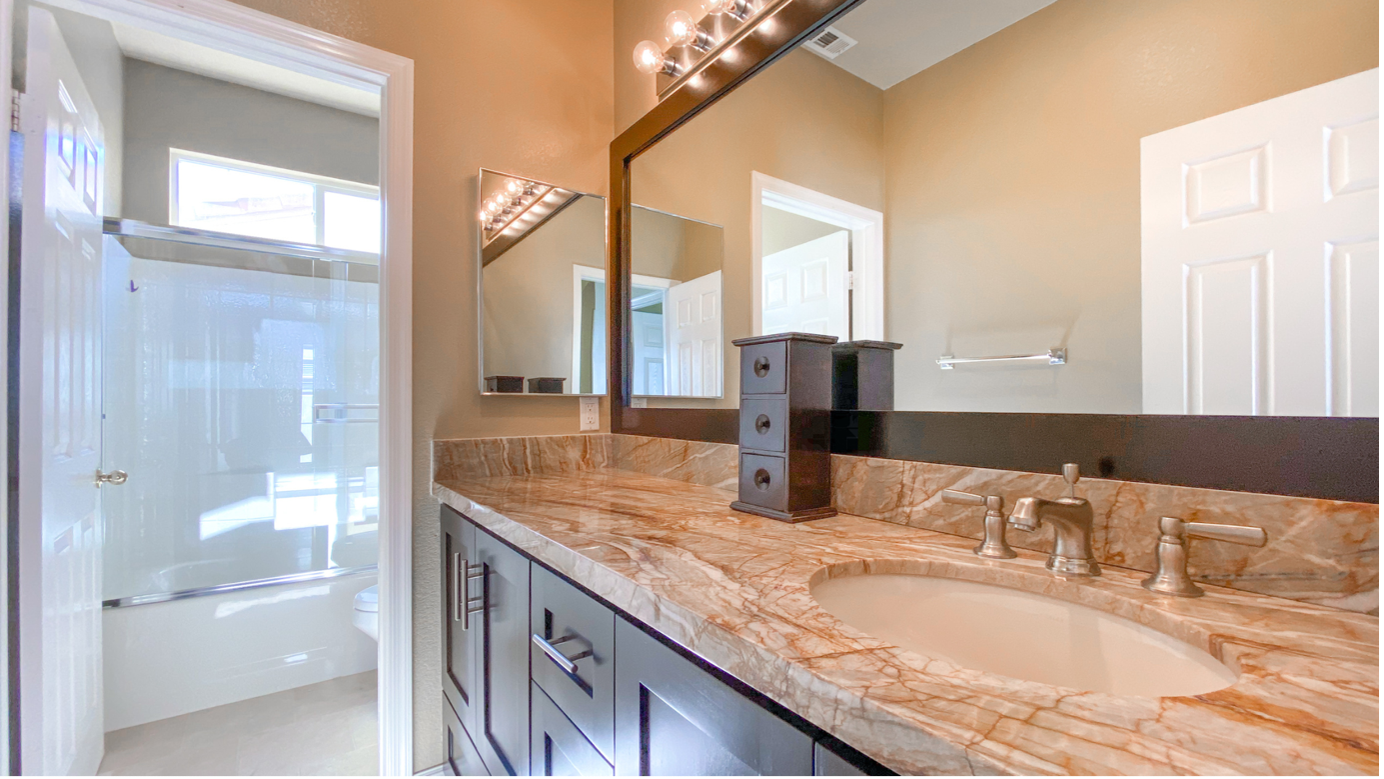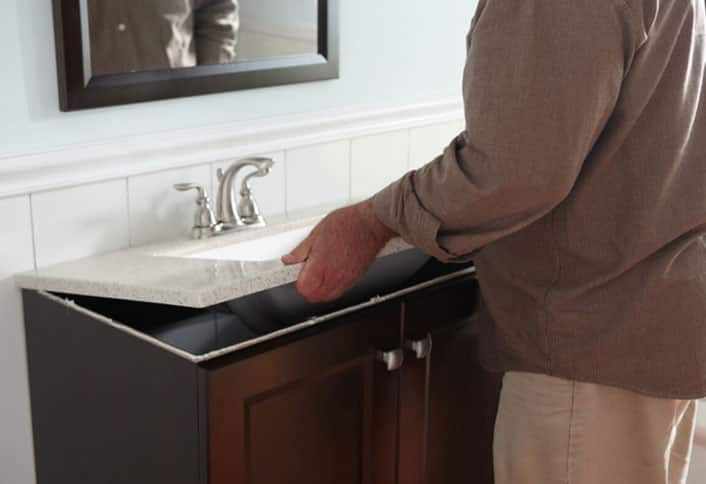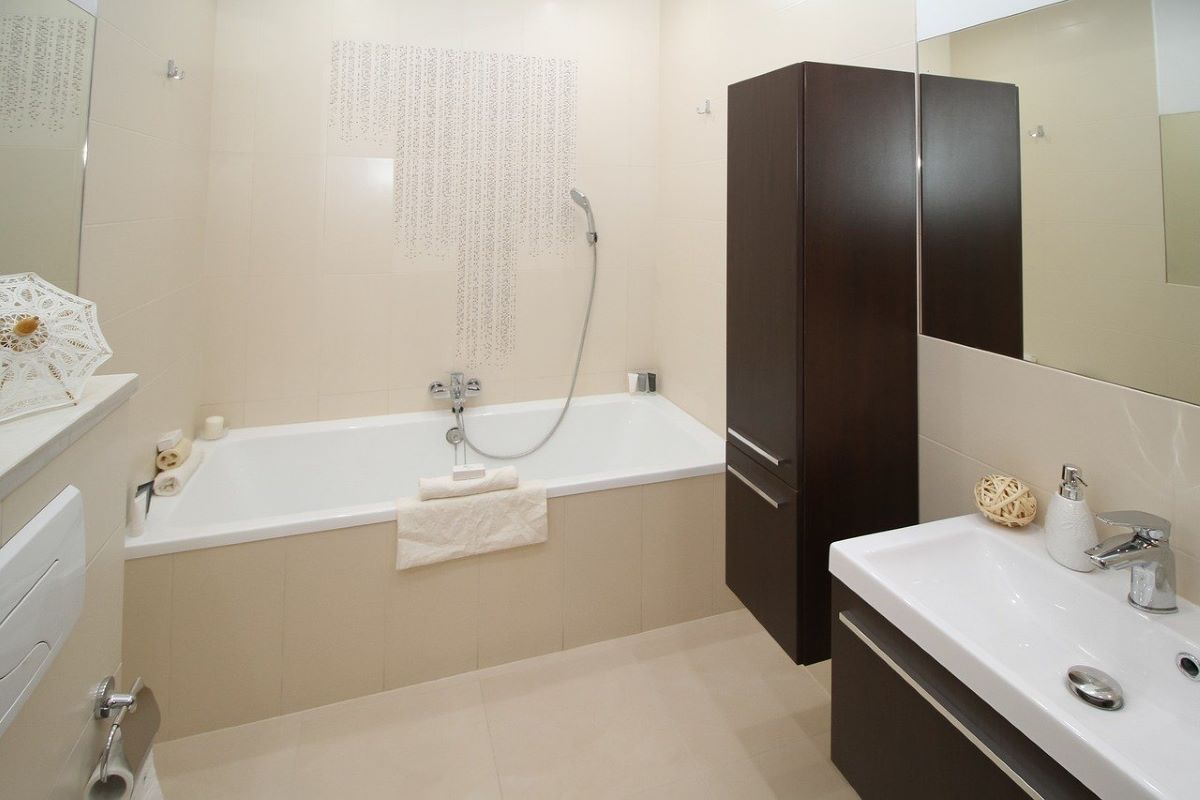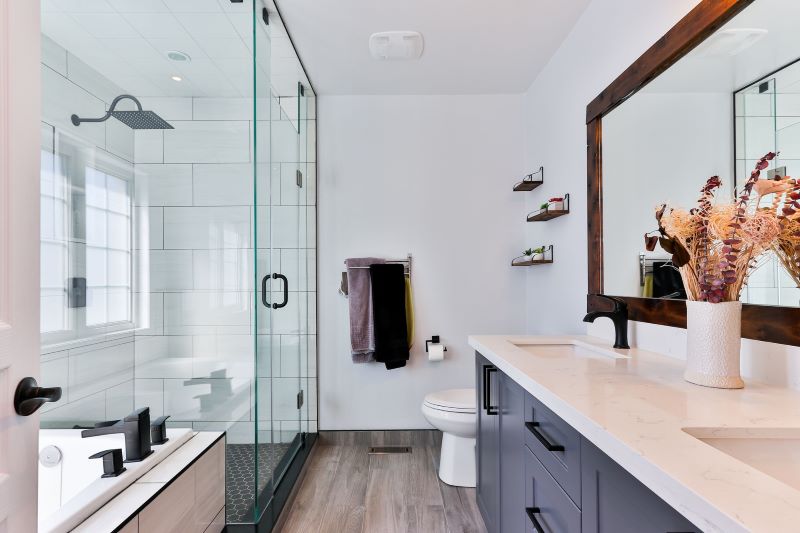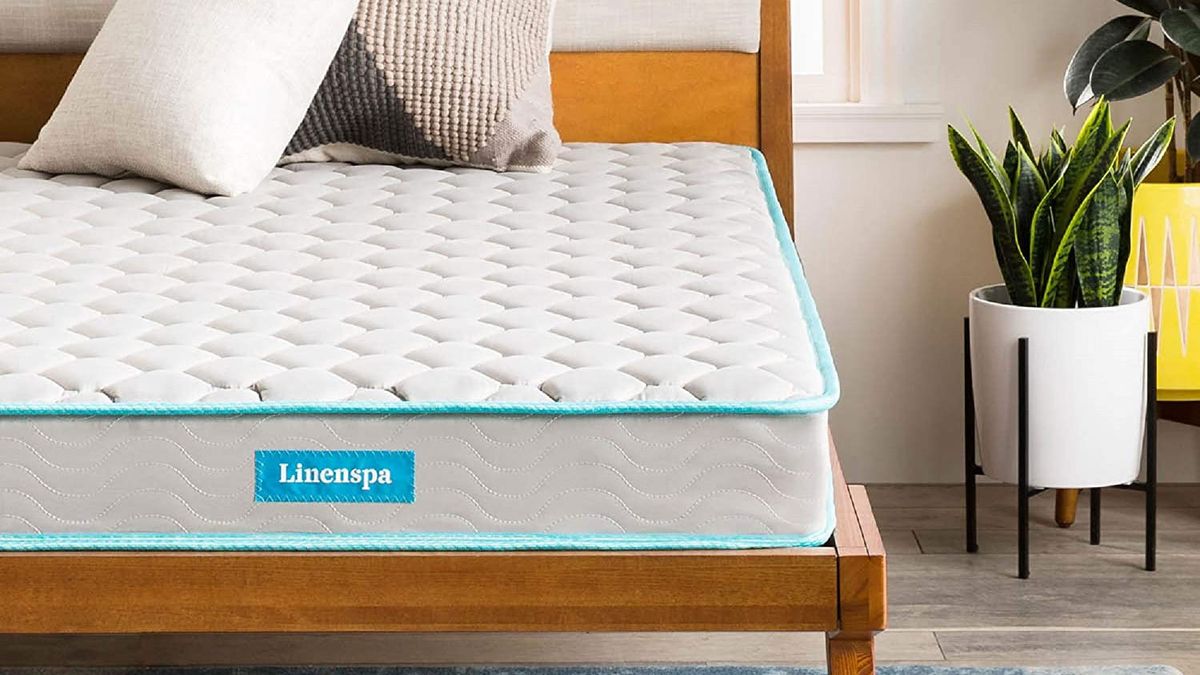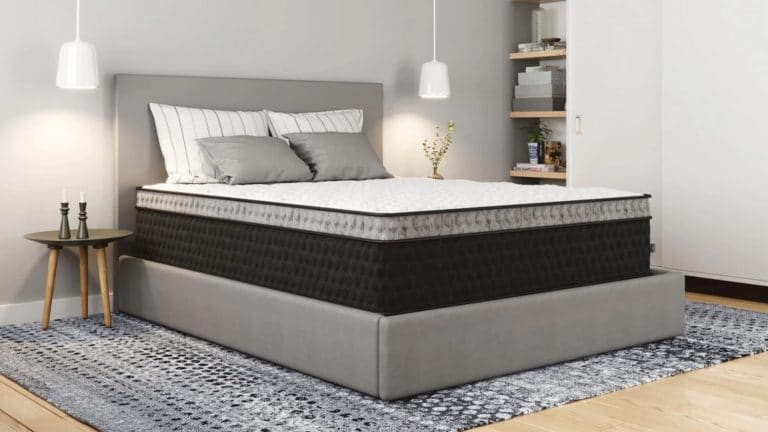If you're looking to upgrade your bathroom, one of the best ways to do so is by installing a new bathroom vanity with legs. Not only does it add style and functionality to your space, but it also adds value to your home. However, installing a bathroom vanity with legs may seem like a daunting task, especially if you're not a DIY expert. But fear not, with the right tools and knowledge, you can successfully install a bathroom vanity with legs in just a few simple steps. In this article, we'll guide you through the process and provide some helpful tips to ensure a smooth and successful installation.Installing Bathroom Vanity With Legs
Before you begin, it's important to gather all the necessary tools and materials for the installation. These may include a drill, level, measuring tape, screws, screwdriver, and silicone caulk. Once you have everything you need, follow these step-by-step instructions for installing a bathroom vanity with legs: Step 1: Measure the space where you plan to install the vanity. Make sure to take into account the size of the vanity and any additional space needed for plumbing or electrical work. Step 2: Use a level to mark the placement of the vanity on the wall. This will ensure that your vanity is installed straight and level. Step 3: If your vanity comes with a backsplash, install it first. Use silicone caulk to secure the backsplash to the wall and the vanity top. Step 4: Place the vanity in its designated spot and use a level to make sure it is straight. If it's not, use shims to adjust the legs until the vanity is level. Step 5: Drill pilot holes in the back of the vanity and into the wall. This will help prevent the wood from splitting when you screw it in. Step 6: Once the vanity is level and in place, secure it to the wall using screws. Make sure to use screws that are appropriate for the type of wall you have (e.g. drywall, plaster, etc.). Step 7: Use a silicone caulk to seal any gaps between the vanity and the wall. This will prevent water from seeping behind the vanity and causing damage. Step 8: If your vanity has drawers, install them by attaching the slides to the sides of the drawers and then to the inside of the vanity. Step 9: Install the faucet and drain according to the manufacturer's instructions. Step 10: Finally, connect the plumbing and turn on the water to make sure everything is working properly. Congratulations, you have successfully installed a bathroom vanity with legs!How to Install a Bathroom Vanity with Legs
Installing a bathroom vanity with legs can be a fun and rewarding DIY project, but it's important to know your limits. If you have little to no experience with home improvement projects, it may be best to hire a professional to ensure the installation is done correctly. However, if you're feeling confident, here are some tips to help you successfully install your own bathroom vanity with legs: Tip 1: Properly measure the space before purchasing a vanity. You don't want to end up with a vanity that's too big or too small for your bathroom. Tip 2: Make sure the vanity is level and secured to the wall before attaching any plumbing fixtures. Tip 3: Use shims to adjust the legs if the floor is uneven. This will help ensure the vanity is level and stable. Tip 4: Have a helper hold the vanity in place while you secure it to the wall. This will make the installation process much easier. Tip 5: Use silicone caulk to seal any gaps between the vanity and the wall or floor. This will prevent water from getting in and causing damage.DIY Bathroom Vanity Installation with Legs
When it comes to choosing the right bathroom vanity with legs, there are a few things to consider. First, think about the style and design of your bathroom. You want to choose a vanity that complements the overall aesthetic of the space. Next, consider the size and storage options. Make sure the vanity fits comfortably in your bathroom and has enough storage for your needs. Lastly, think about the material and durability of the vanity. You want to choose a vanity that will withstand the daily wear and tear of a bathroom.Choosing the Right Bathroom Vanity with Legs for Your Space
To ensure a successful installation, it's important to have all the necessary tools and materials on hand. Here's a list of what you'll need: Tools: Drill, level, measuring tape, screws, screwdriver, silicone caulk Materials: Vanity with legs, backsplash (optional), faucet, drain, plumbing fixturesTools and Materials Needed for Installing a Bathroom Vanity with Legs
While installing a bathroom vanity with legs may seem like a simple task, there are some common mistakes that can be easily avoided. Here are a few to keep in mind: Mistake 1: Not properly measuring the space before purchasing the vanity. Mistake 2: Forgetting to level the vanity before securing it to the wall. Mistake 3: Using the wrong type of screws for your wall type. Mistake 4: Not using shims to adjust the legs if the floor is uneven. Mistake 5: Not properly sealing gaps between the vanity and the wall or floor.Common Mistakes to Avoid When Installing a Bathroom Vanity with Legs
Like any home improvement project, there are pros and cons to installing a bathroom vanity with legs. Here are a few to consider: Pros: - Adds style and functionality to your bathroom - Can be a DIY project - Adds value to your home Cons: - May require some plumbing or electrical work - May be more expensive than a wall-mounted vanity - Can be more difficult to clean around the legsPros and Cons of Installing a Bathroom Vanity with Legs
The cost of installing a bathroom vanity with legs can vary depending on the size, material, and brand. On average, a vanity with legs can cost anywhere from $200 to $1000. In comparison, a wall-mounted vanity can cost between $150 to $500. However, keep in mind that a bathroom vanity with legs may add more value to your home in the long run. Now that you have all the information you need, it's time to start planning and installing your new bathroom vanity with legs. By following the steps and tips outlined in this article, you'll have a beautiful and functional vanity in no time. And remember, if you're unsure about any part of the installation, it's always best to consult a professional. Happy renovating!Cost Comparison: Installing a Bathroom Vanity with Legs vs. Wall-Mounted Vanity
Why Choose a Bathroom Vanity With Legs?

Maximize Storage Space
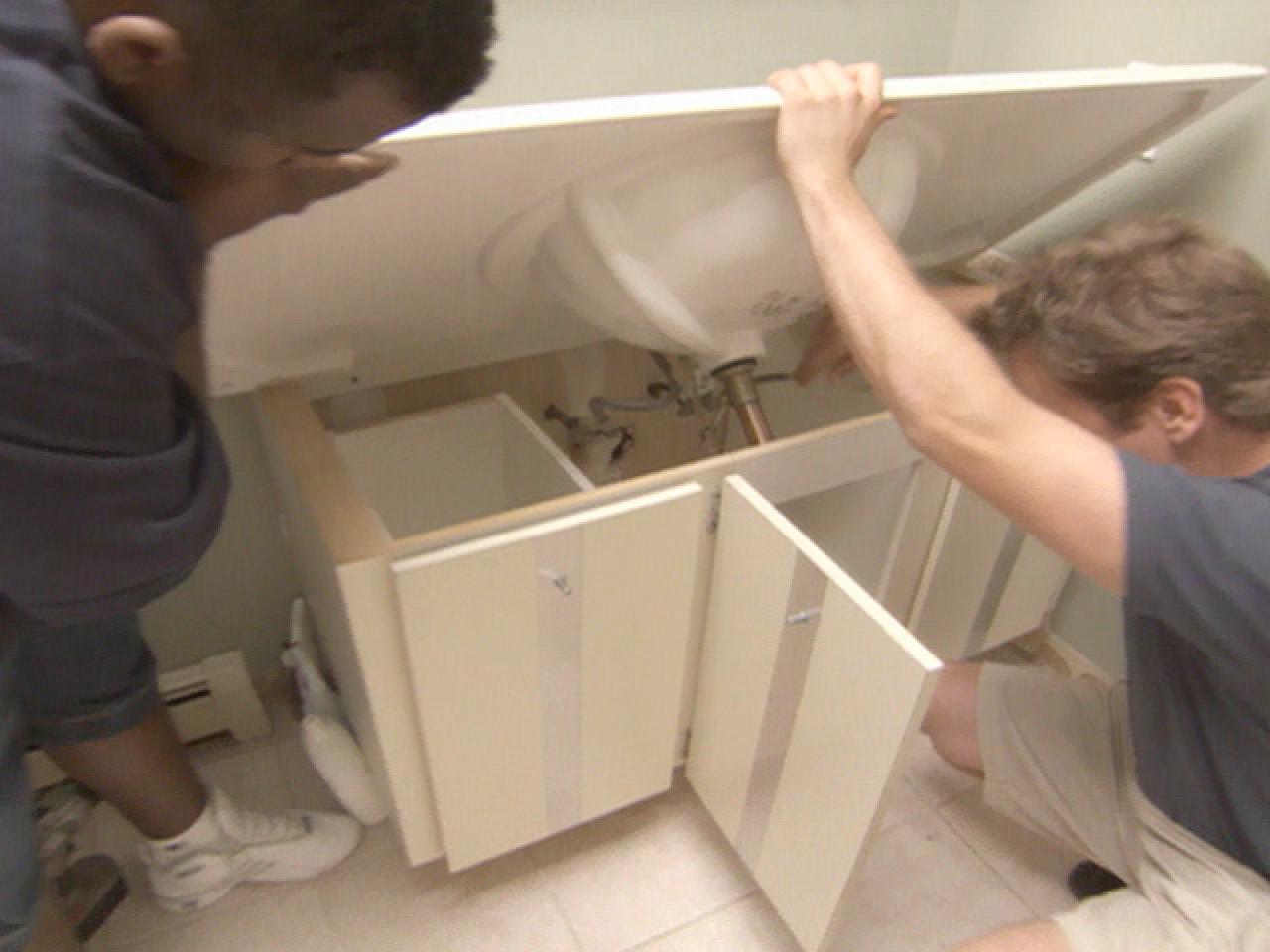 When it comes to designing your dream bathroom, functionality is just as important as style. And a bathroom vanity with legs offers the best of both worlds. By choosing a vanity with legs, you can maximize the storage space in your bathroom. The legs elevate the vanity, allowing for additional storage space underneath. This is perfect for storing towels, extra toiletries, or even a small stool. Plus, with the added storage space, you can keep your bathroom clutter-free and organized.
When it comes to designing your dream bathroom, functionality is just as important as style. And a bathroom vanity with legs offers the best of both worlds. By choosing a vanity with legs, you can maximize the storage space in your bathroom. The legs elevate the vanity, allowing for additional storage space underneath. This is perfect for storing towels, extra toiletries, or even a small stool. Plus, with the added storage space, you can keep your bathroom clutter-free and organized.
Customizable Options
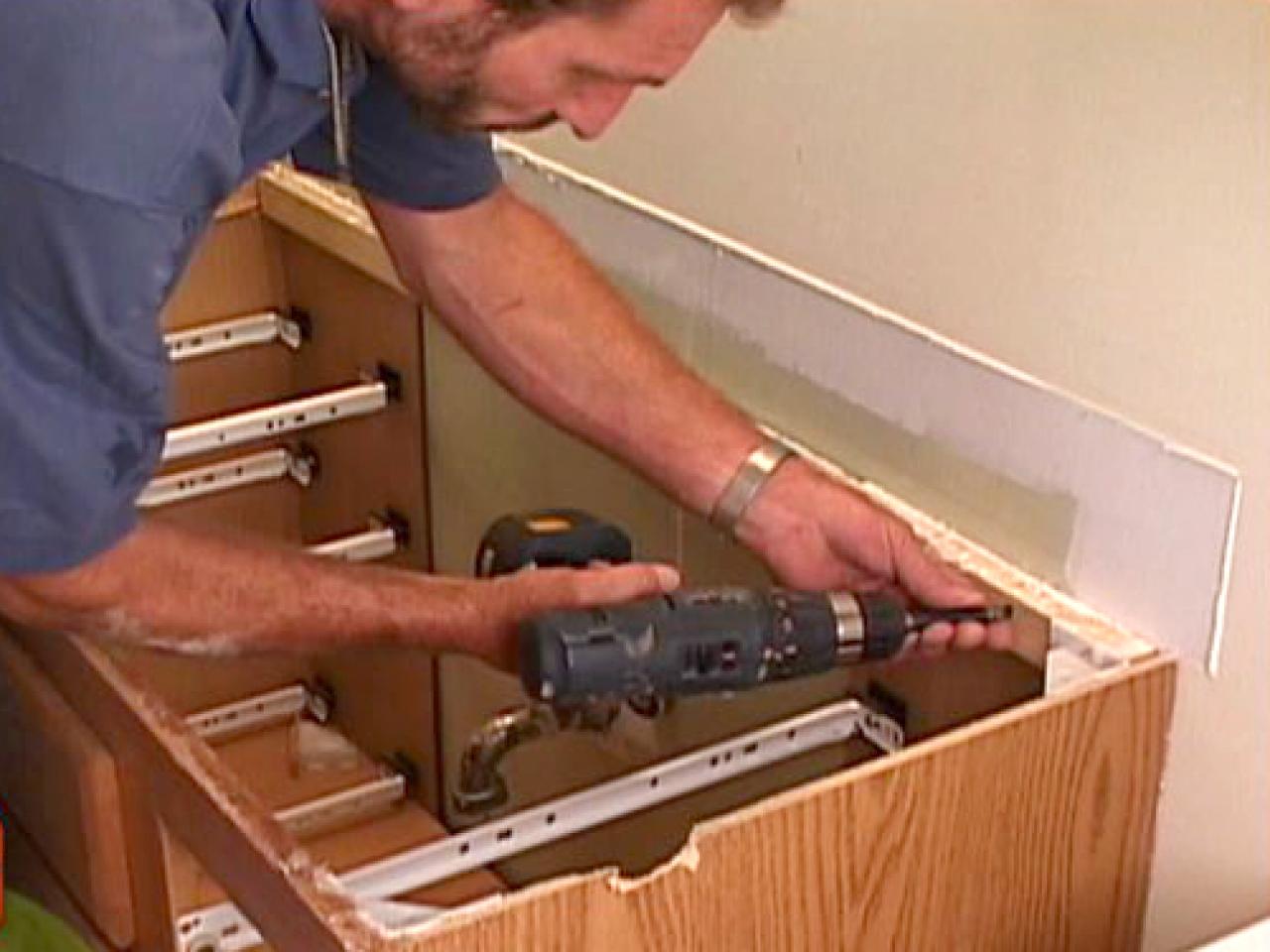 Another benefit of choosing a bathroom vanity with legs is the customizable options available. With traditional vanities, you are limited to the size and style already provided. However, with a vanity with legs, you have the freedom to choose the size, style, and even the material of the legs. This allows you to create a unique and personalized look for your bathroom. Plus, if you ever decide to change the design of your bathroom, you can easily switch out the legs for a different look without having to replace the entire vanity.
Another benefit of choosing a bathroom vanity with legs is the customizable options available. With traditional vanities, you are limited to the size and style already provided. However, with a vanity with legs, you have the freedom to choose the size, style, and even the material of the legs. This allows you to create a unique and personalized look for your bathroom. Plus, if you ever decide to change the design of your bathroom, you can easily switch out the legs for a different look without having to replace the entire vanity.
Enhanced Aesthetics
 Let's face it, the bathroom is not always the most glamorous room in the house. But with a bathroom vanity with legs, you can instantly elevate the overall look and feel of your bathroom. The exposed legs add a touch of elegance and sophistication to the room. Plus, with the customizable options, you can choose legs that complement the rest of your bathroom's design. Whether you prefer a modern, sleek look or a more traditional, rustic feel, a bathroom vanity with legs can enhance the aesthetics of your space.
Let's face it, the bathroom is not always the most glamorous room in the house. But with a bathroom vanity with legs, you can instantly elevate the overall look and feel of your bathroom. The exposed legs add a touch of elegance and sophistication to the room. Plus, with the customizable options, you can choose legs that complement the rest of your bathroom's design. Whether you prefer a modern, sleek look or a more traditional, rustic feel, a bathroom vanity with legs can enhance the aesthetics of your space.
Easy Installation
 Installing a bathroom vanity with legs may seem like a daunting task, but it is actually quite simple. Unlike wall-mounted vanities, which require precise measurements and drilling into walls, a vanity with legs can be easily installed by attaching the legs to the vanity and then placing it in the desired location. This makes it a great option for DIY projects or for those looking for a quick and easy bathroom upgrade.
In conclusion, a bathroom vanity with legs offers numerous benefits and is a great choice for any bathroom design. With its ability to maximize storage space, customizable options, enhanced aesthetics, and easy installation, it's no wonder why this type of vanity is becoming increasingly popular. So why settle for a traditional vanity when you can have a functional and stylish bathroom vanity with legs? Upgrade your bathroom today and enjoy all the benefits it has to offer.
Installing a bathroom vanity with legs may seem like a daunting task, but it is actually quite simple. Unlike wall-mounted vanities, which require precise measurements and drilling into walls, a vanity with legs can be easily installed by attaching the legs to the vanity and then placing it in the desired location. This makes it a great option for DIY projects or for those looking for a quick and easy bathroom upgrade.
In conclusion, a bathroom vanity with legs offers numerous benefits and is a great choice for any bathroom design. With its ability to maximize storage space, customizable options, enhanced aesthetics, and easy installation, it's no wonder why this type of vanity is becoming increasingly popular. So why settle for a traditional vanity when you can have a functional and stylish bathroom vanity with legs? Upgrade your bathroom today and enjoy all the benefits it has to offer.





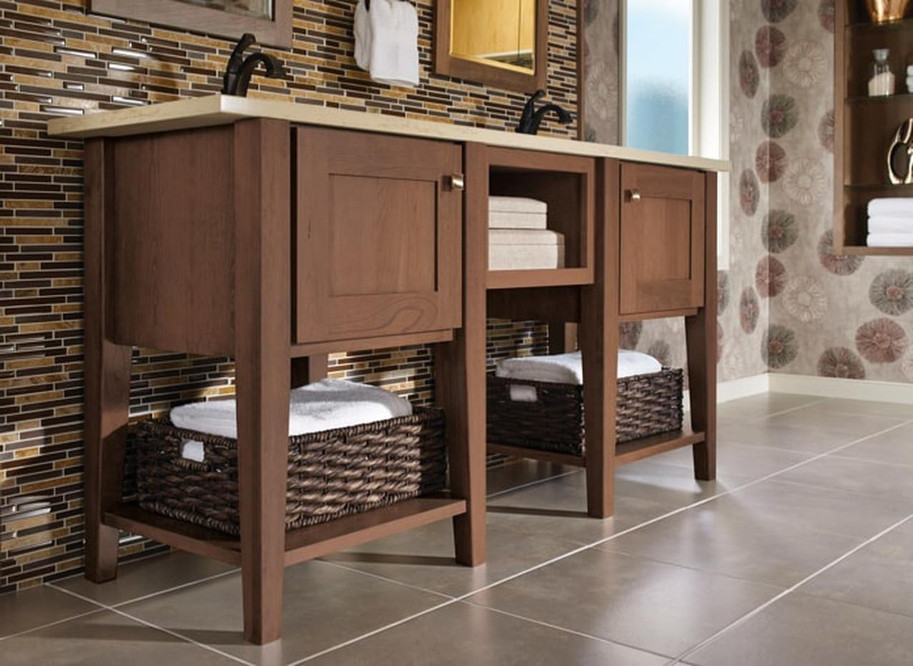
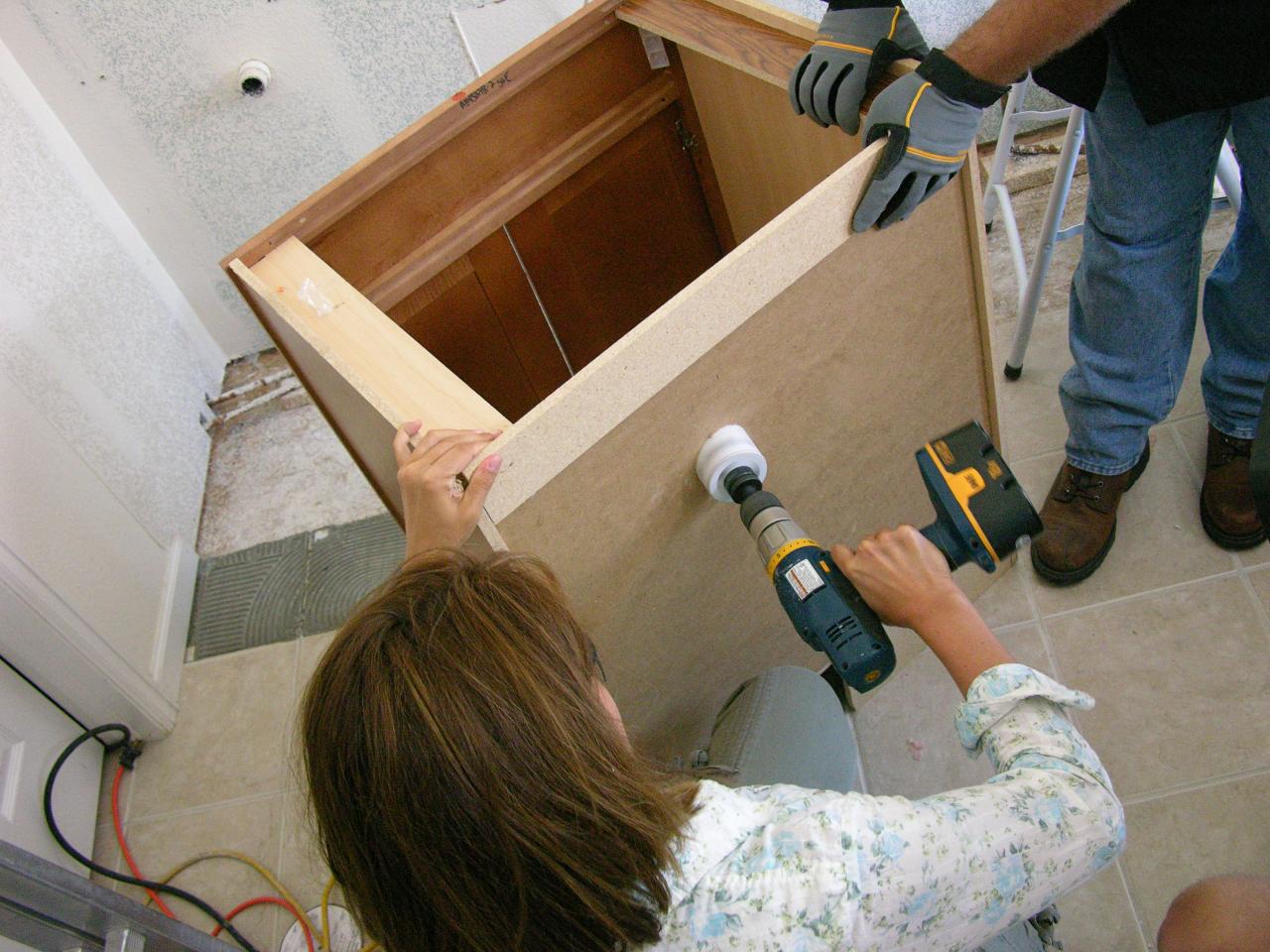

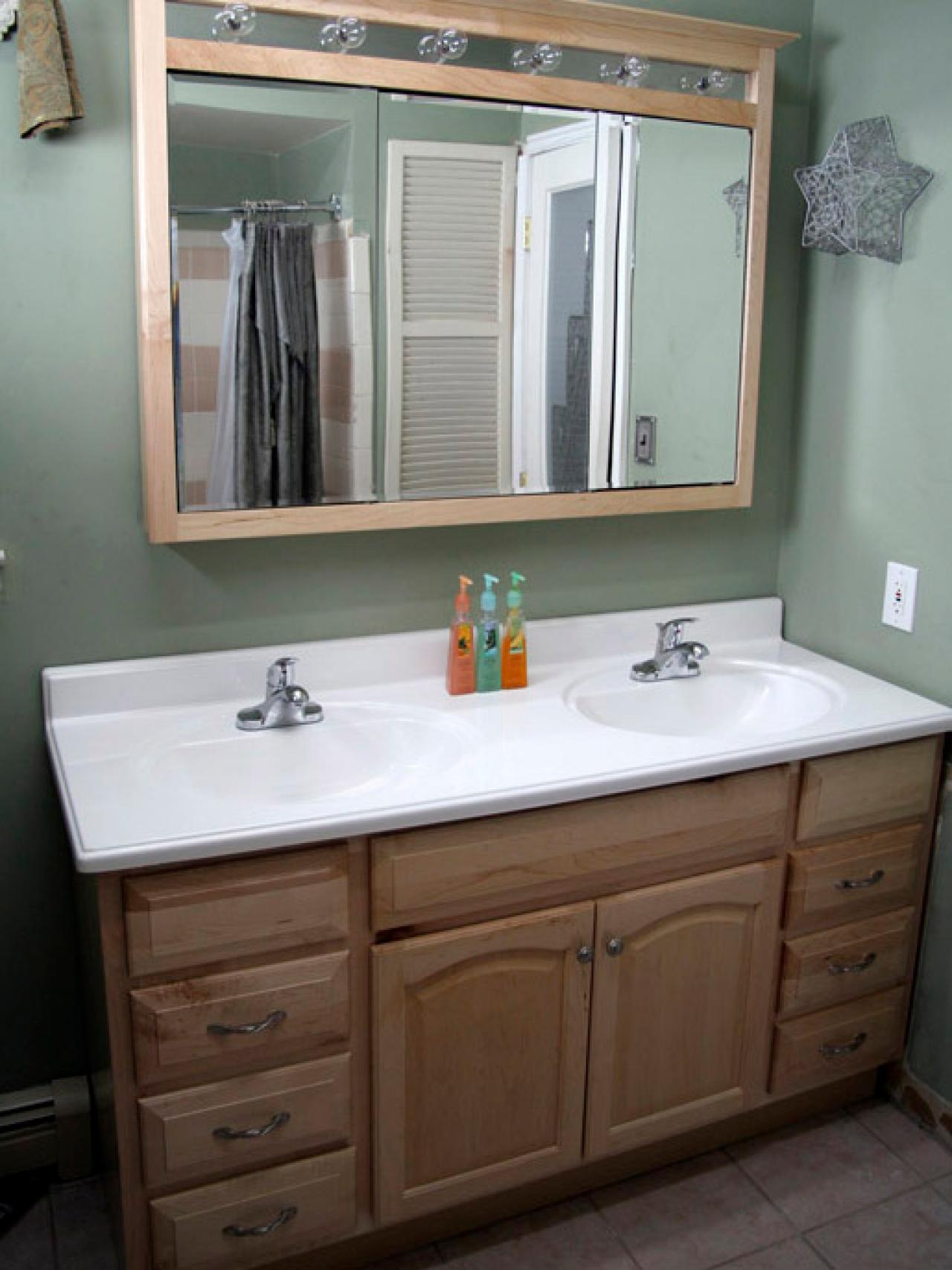
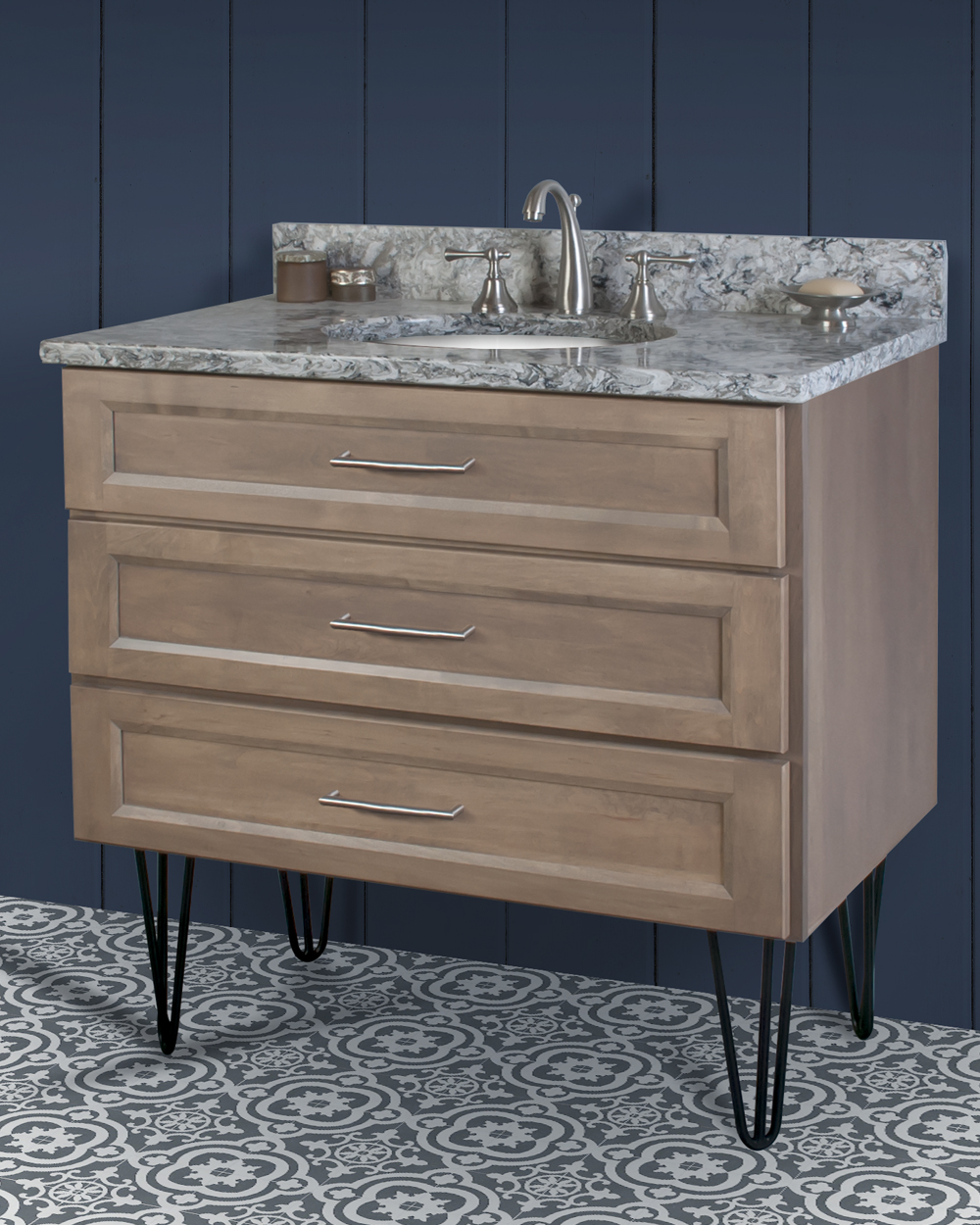
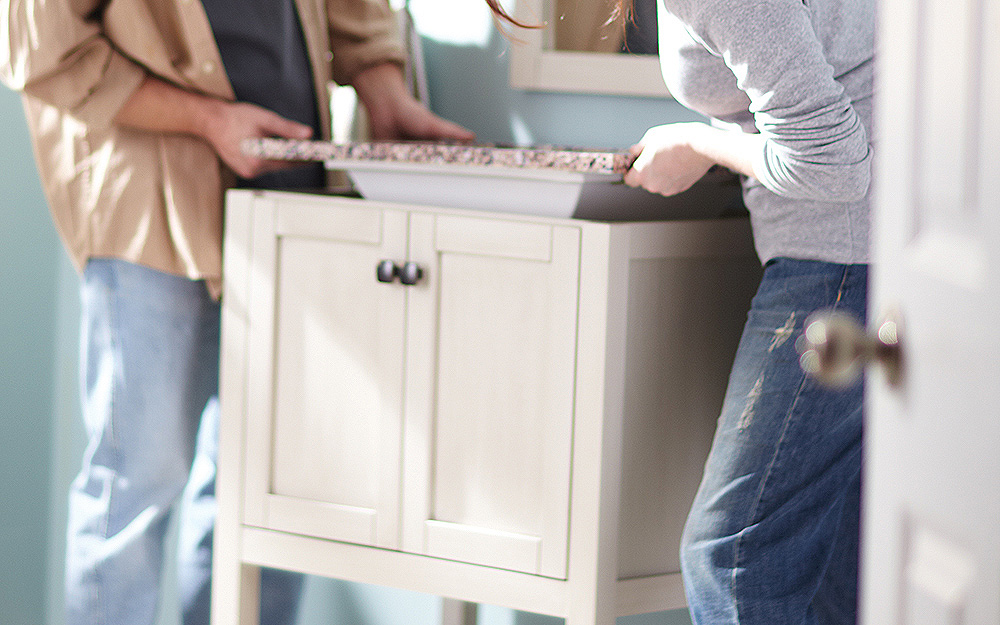
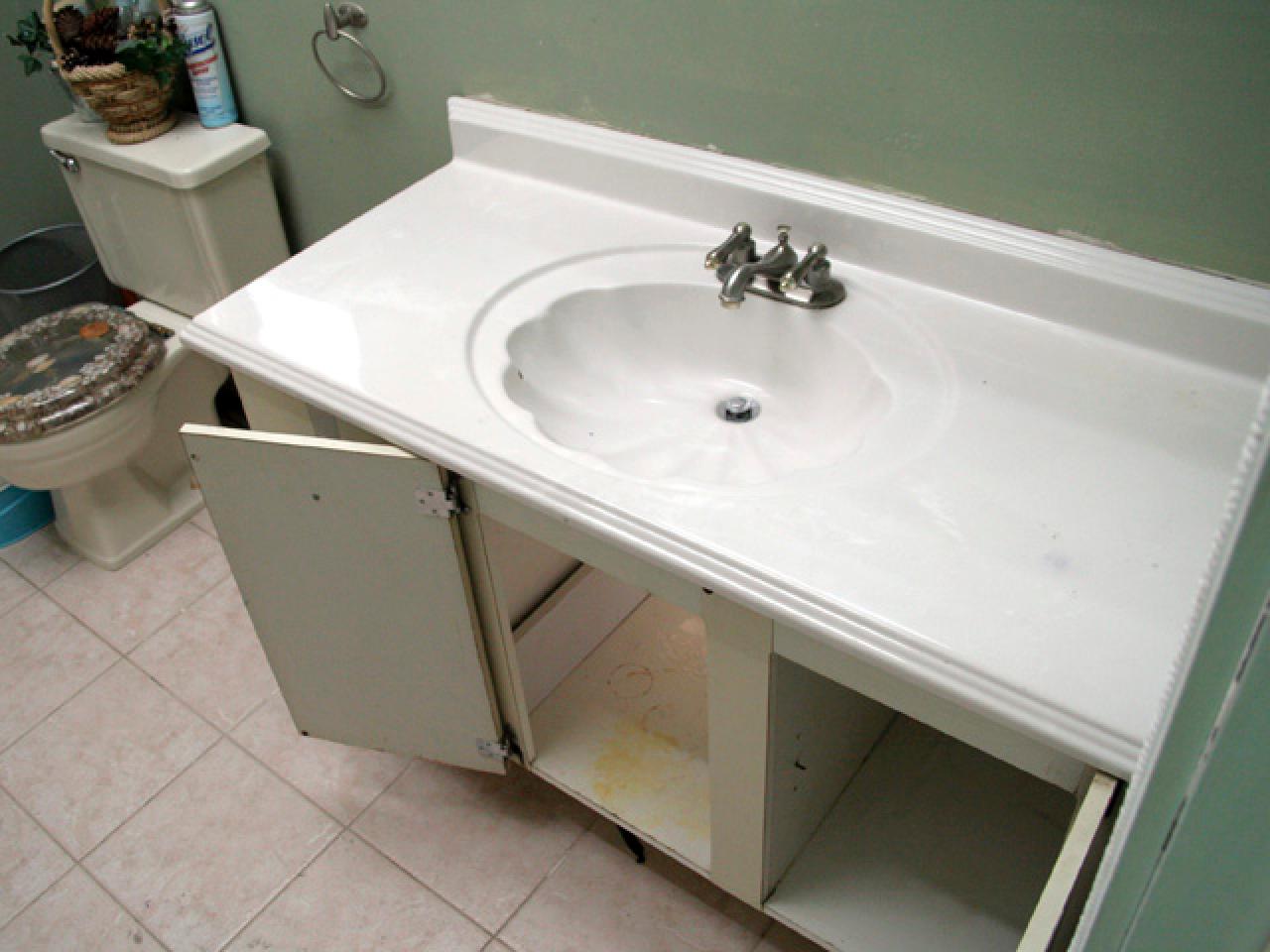


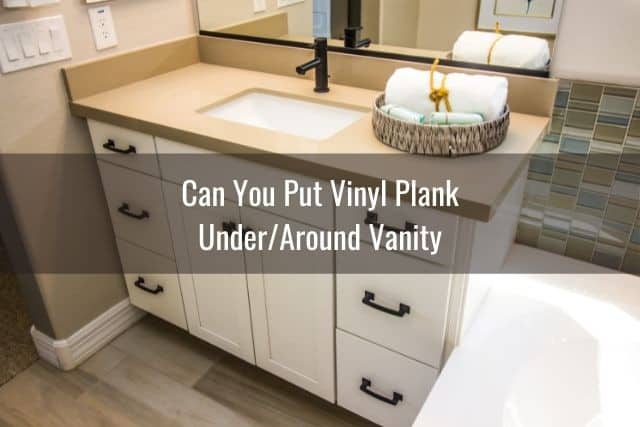

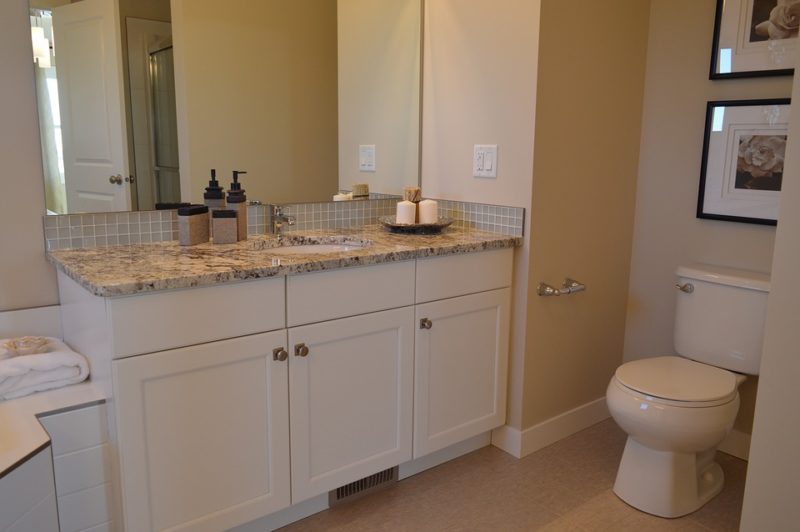











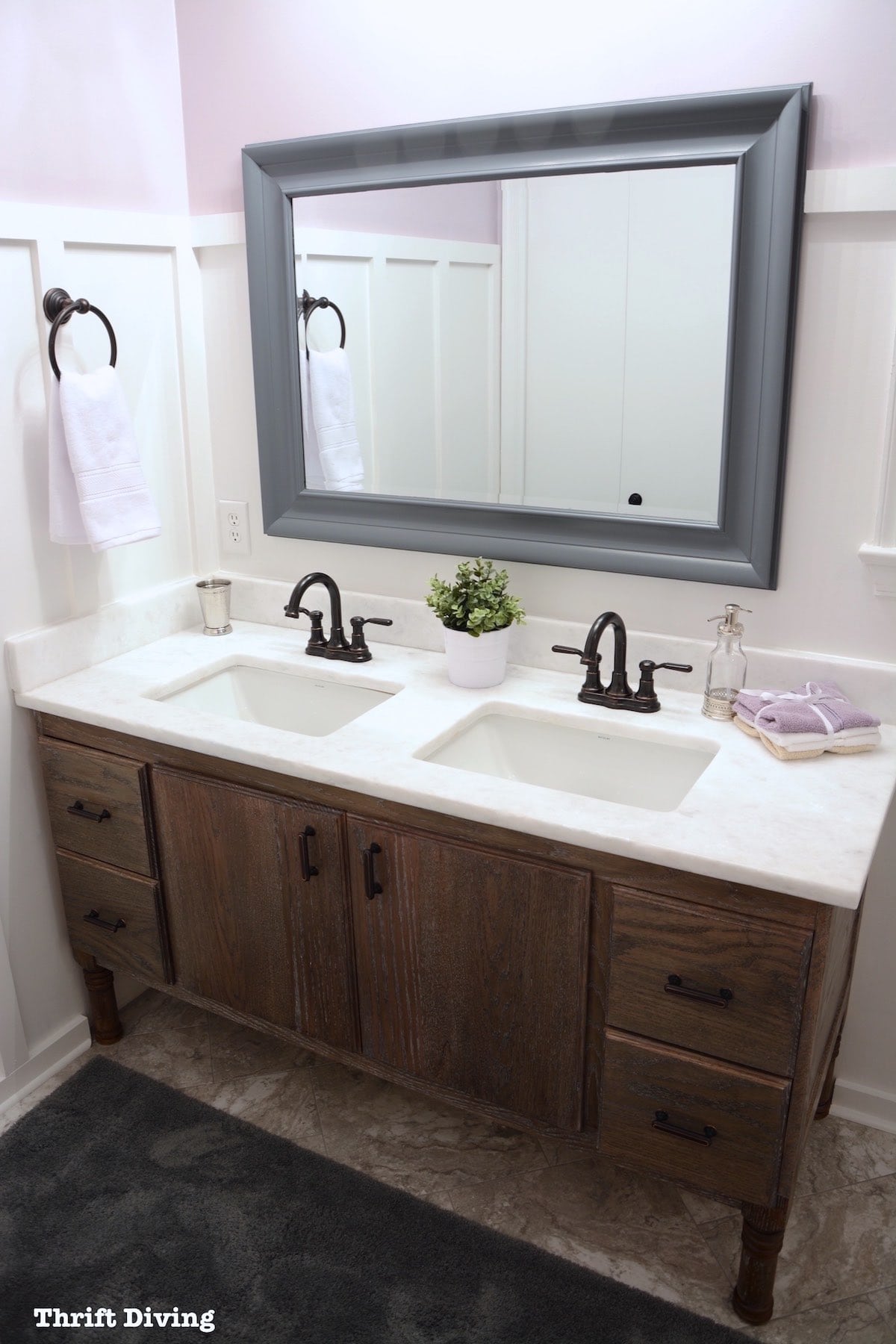

:max_bytes(150000):strip_icc()/build-something-diy-vanity-594402125f9b58d58ae21158.jpg)


